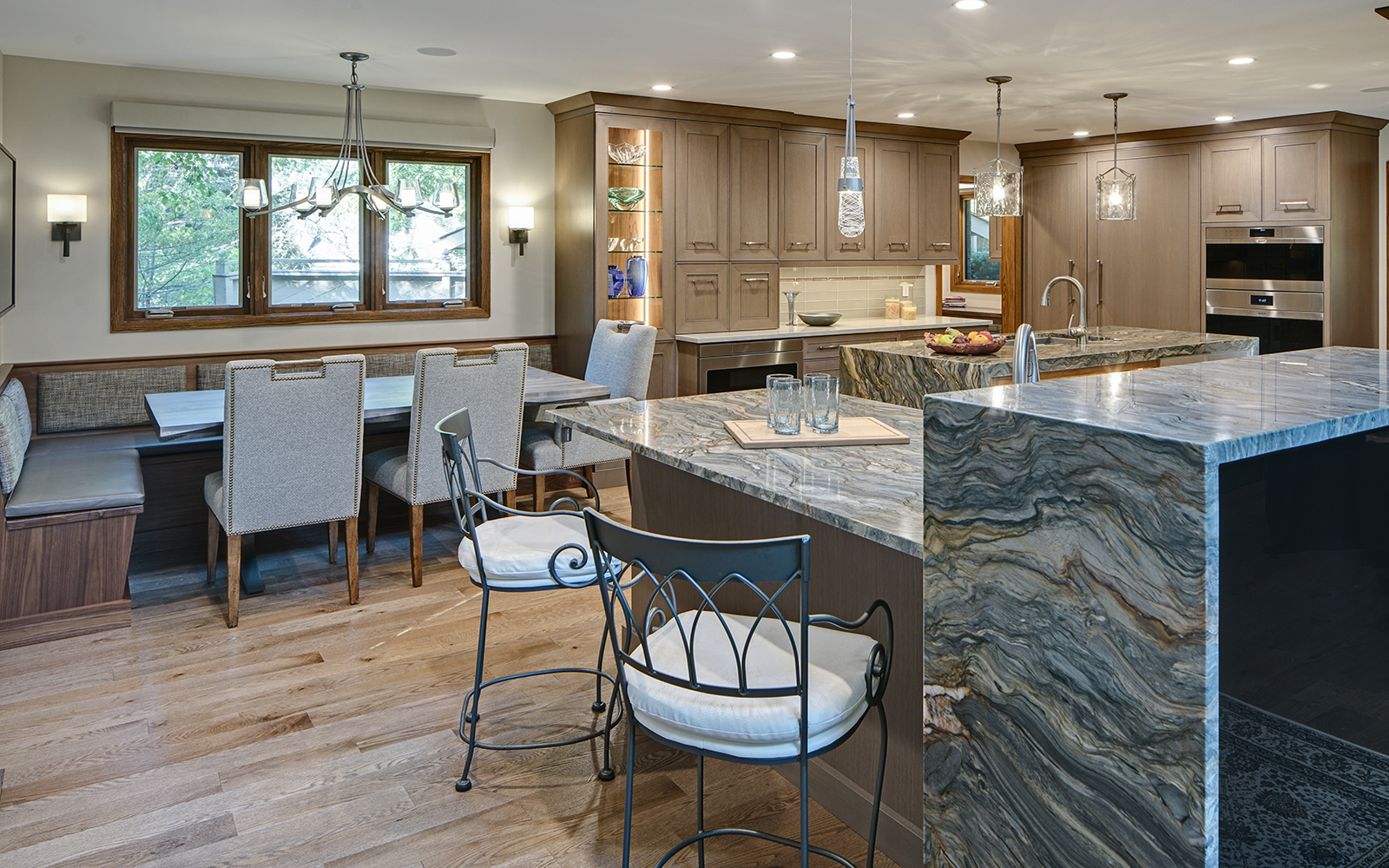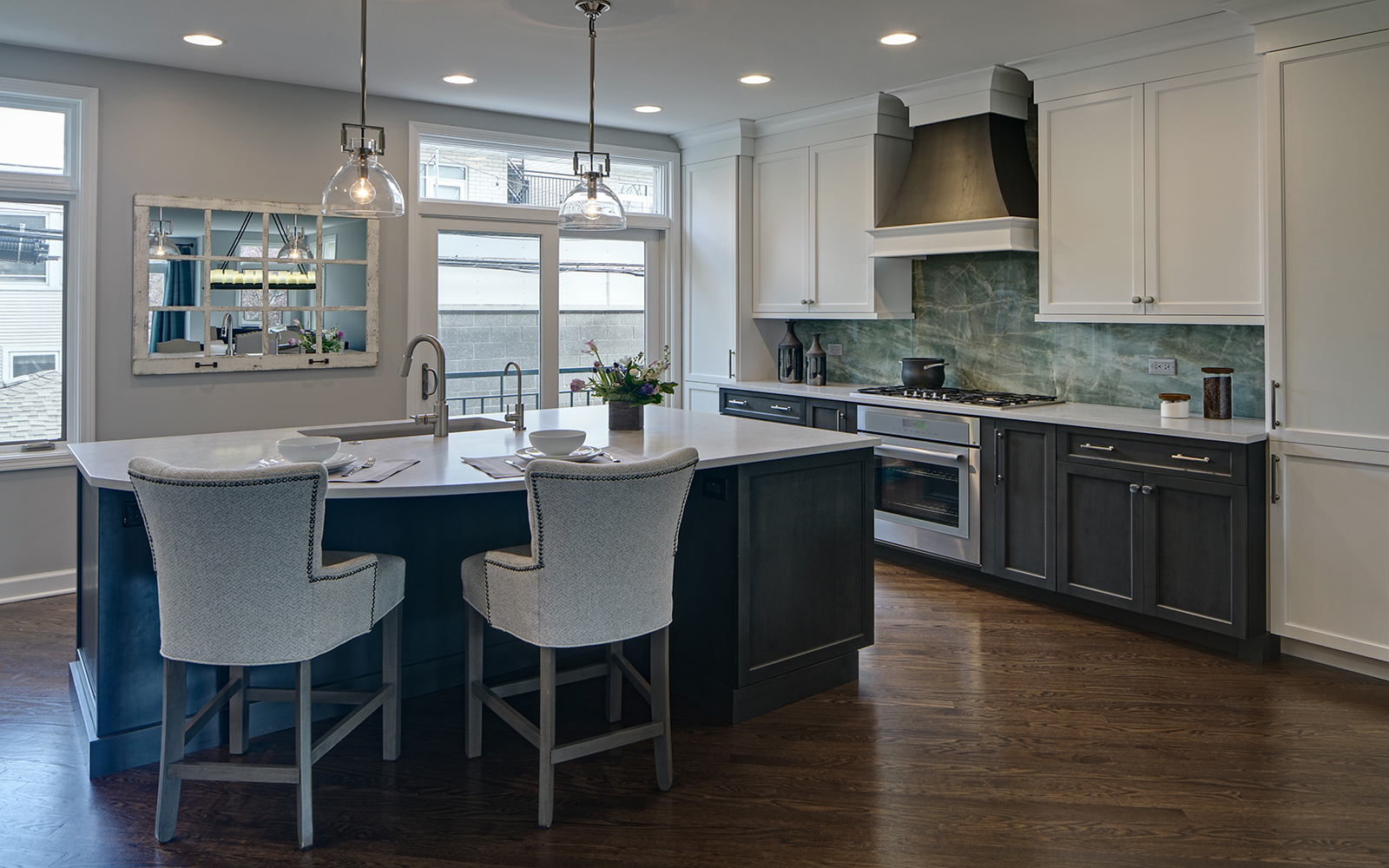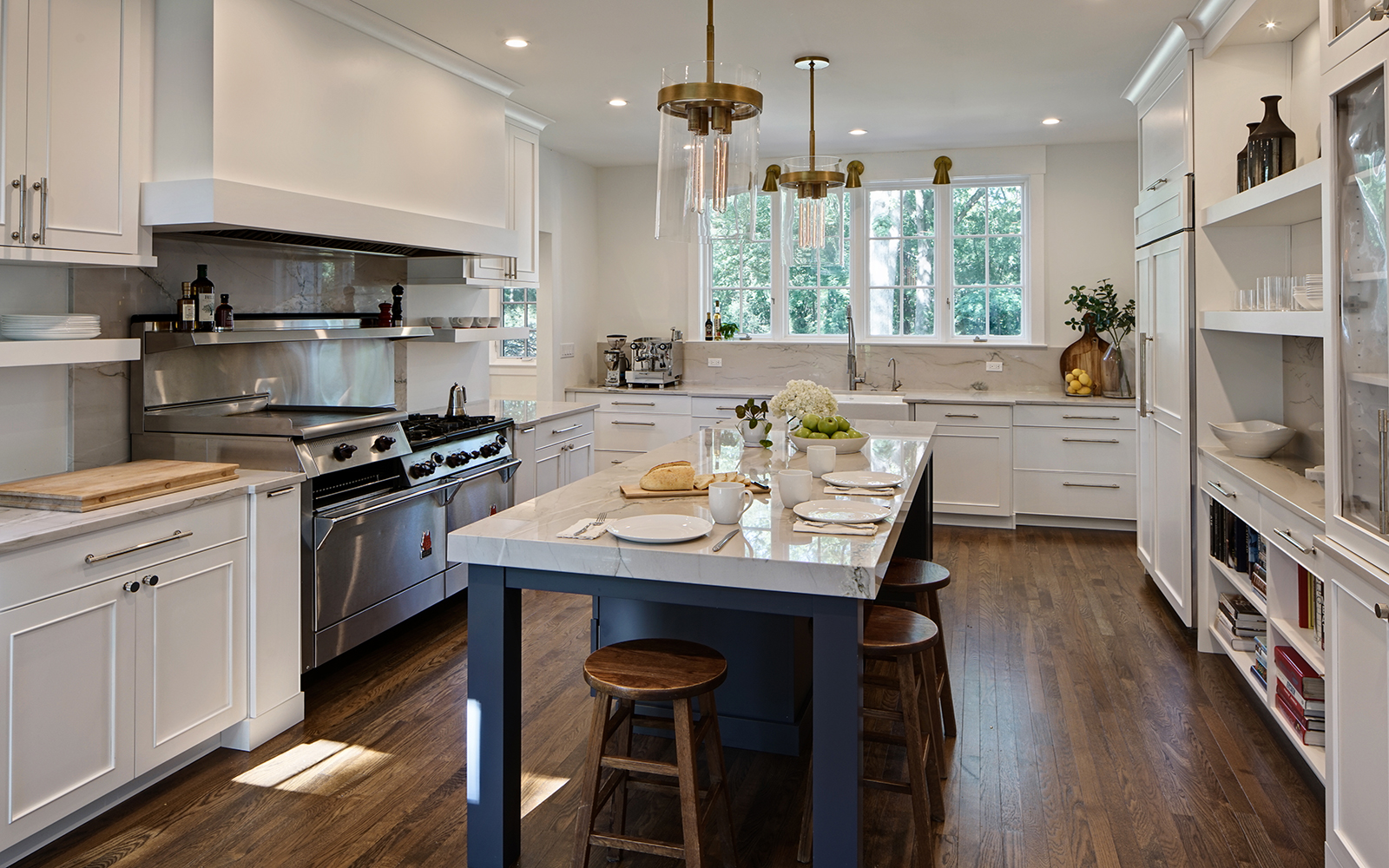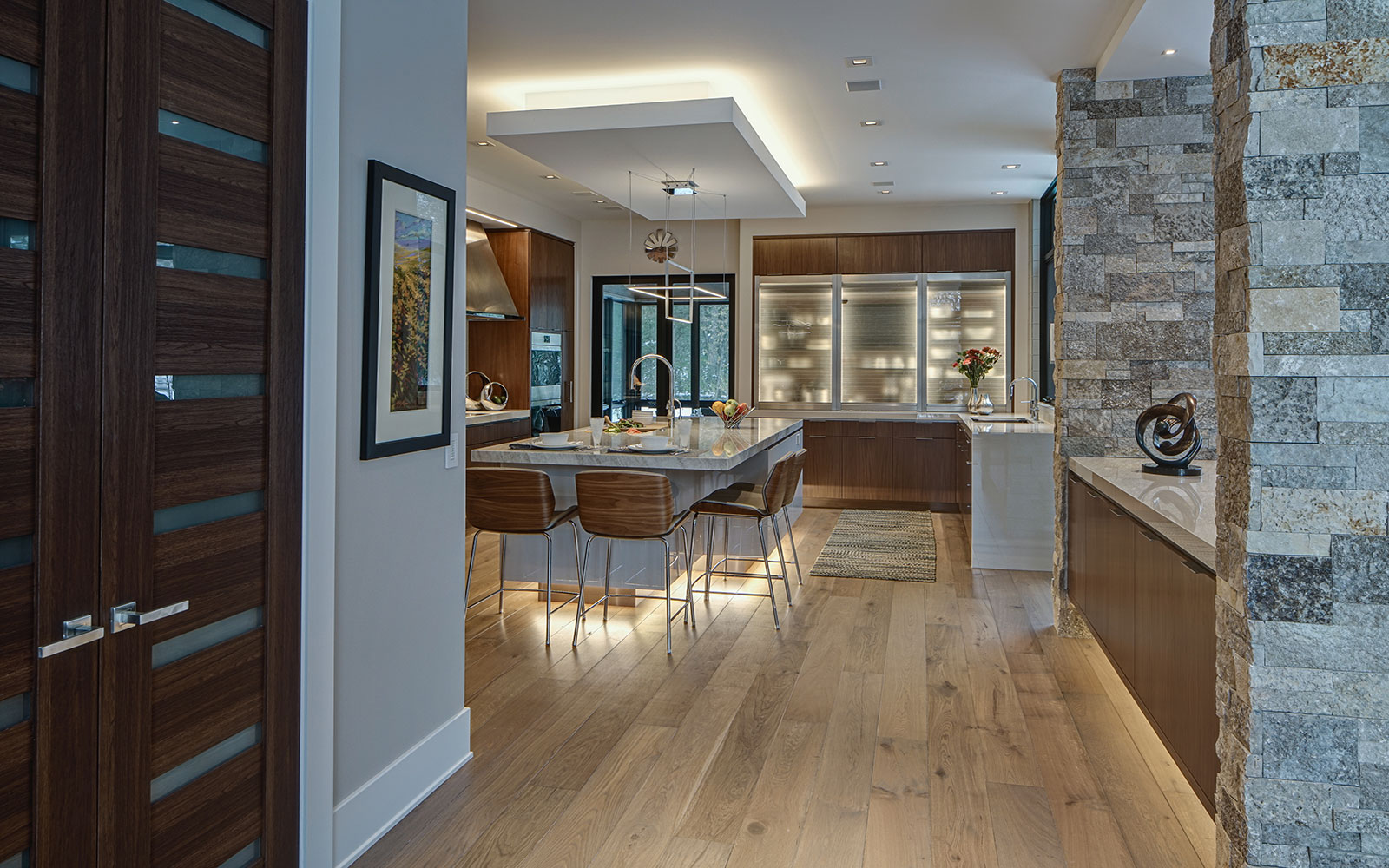How to Find Your Kitchen Style
How to Find Your Kitchen Style
Few remodeling projects produce as much anxiety as a kitchen design. After all, the kitchen is the heart of the home – it’s where some of life’s most essential activities take place and where family and friends come together. The thought of redesigning it can be overwhelming. For each design decision, there can be hundreds of choices of products, materials, and styles.
Here we provide some tools that will help you find your kitchen style. First we’ll help you decide which aesthetic theme best reflects your own style. Then we’ll dive into the nitty-gritty of creating your dream kitchen – from colors and materials to shelving and lighting. Once you have the big picture and the details in hand, kitchen design becomes a lot less stressful and a lot more fun.
Narrowing Your Kitchen Style Preferences to a General Aesthetic Theme
Mid-century modern or Craftsman? Contemporary farmhouse kitchen or French Country? Kitchen design styles can go by many names, which can quickly get overwhelming.
Really, though, kitchen design categories boil down to three basic aesthetic themes: traditional, modern, and transitional. Even if you don’t know it, chances are you probably already have a decorating style and preferences that fall into one of these categories.
Traditional Kitchen Design Elements
Traditional kitchens create soft, welcoming spaces with plenty of personal expressive touches and decorative flourishes.
Typical elements of traditional kitchens include natural materials like wood or stone with simple stains and neutral tones. What really distinguishes traditional kitchens, though, is their embrace of artistic embellishments. They’ll incorporate carvings, etchings and decorative details on moldings and trims: everything from distinctive tile backsplashes of stone or glass to cabinet doors and drawers with ornate pulls. Traditional kitchens also incorporate plenty of storage through elements like tall, spacious cabinets.
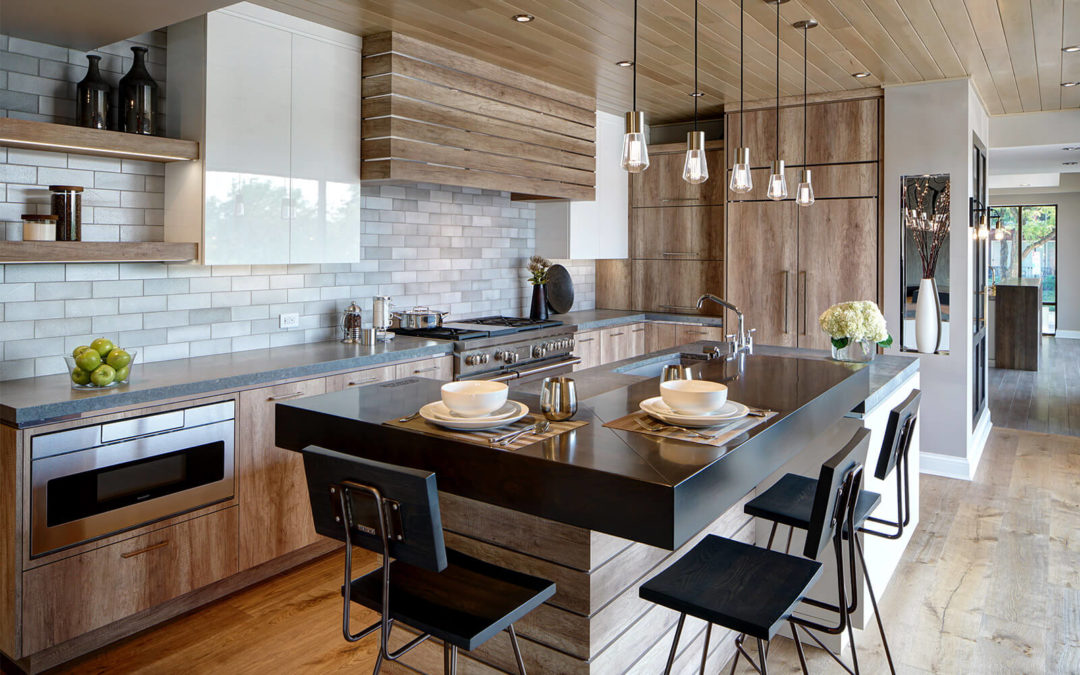
Modern Kitchen Design Elements
Rooted in the minimalist design movement of the early- to mid-twentieth century, modern kitchens aim for a clean, contemporary look.
Modern kitchens rely on simple materials, bold colors, and geometric patterns and shapes to create clean lines and open spaces. You’ll find a combination of natural and man-made materials, often with industrial details like stainless steel. Colors tend to be simple and clean, with palettes in monochromatic or pastel hues. Designs are sleek and keep ornamentation to a minimum.
Transitional Kitchen Design Elements
As the name suggests, transitional kitchens are somewhere in between. Transitional kitchens marry the contemporary look of a modern kitchen with the homeliness of a traditional kitchen.
As such, transitional kitchens offer abundant playful design options. You might pair ornate lighting fixtures with a clean, bold table, for instance—or decorative cabinets and chrome appliances.
How to Pick Colors and Materials You Like
After you get a sense of your preferences and find your kitchen style, the next step is choosing colors and materials. A good planning process will help! Search your favorite design sites for advice on kitchen color schemes and kitchen design materials to help you compare colors and materials. Secure samples and see how they look in your kitchen.
Choosing a layout for your kitchen can also help streamline decisions on colors and materials. Your materials will change if you plan to incorporate a kitchen island or have a galley kitchen, for instance.
Current Trends in Colors and Materials for the Kitchen
Countertops continue to be the top concern in terms of materials. Engineered quartz and granite are popular, followed closely by butcher block and wood slab. Kitchen islands are also hot, perhaps because so many professionals working from home find them to be a great multipurpose area.
It depends on who you ask, but when it comes to contemporary kitchen color trends, most designers agree that the following colors are trending:
- Whites are still the top choice for kitchen walls, cabinets, and backsplashes.
- A pop of black can add a stylish accent to any color palette.
- Warm neutrals provide versatility but have a deeper, richer feel than whites.
- Lemon yellows give your space a sunny, cheerful vibe.
- The right greens can create a natural feel in the kitchen.
What to Consider When Choosing Colors and Materials for the Kitchen
When choosing colors and materials for the kitchen, you’ll want to start with the big stuff – cabinets, countertops, backsplashes, and paint – and work your way to the details.
Watch out for common mistakes when picking paint colors – this includes rushing to decisions. To avoid having to repaint, take the time to see what different colors look like at different times of day.
Selecting Cabinetry and Shelving You Like in a Kitchen
After surfaces, storage is the biggest concern of kitchen design, both in terms of space and costs. The two main types of storage are open shelving and kitchen cabinets.
Both types serve as the focal point in your kitchen. The choice between open shelving and kitchen cabinets depends on whether you want to display your kitchen goods.
Pros and Cons of Custom Kitchen Cabinets
You can buy kitchen cabinets readymade or have them custom fitted. You should consider the pros and cons of each choice.
Readymade cabinets can be cheaper but are often less durable. By contrast, custom kitchen cabinets are handmade by skilled cabinet makers using locally sourced, quality materials. You can consult with a designer on a configuration that works best for your space. If you have an unconventional kitchen layout, it may be best to get custom-fitted cabinets.
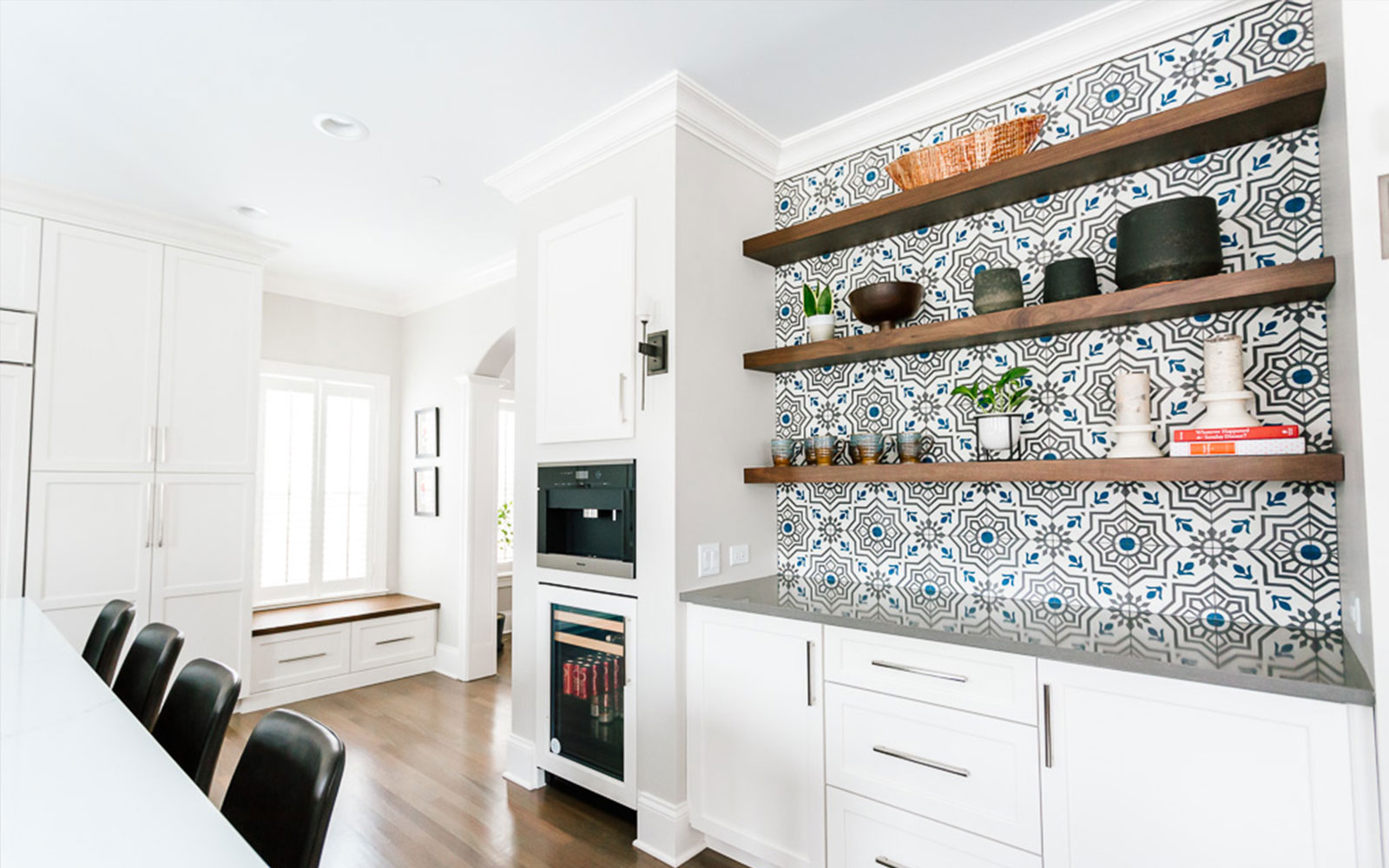
Pros and Cons of Open Shelving
Open shelving is trendy and can be a great way to show off that collection of martini glasses or colorful serving bowls. Open shelves are also less expensive.
However, open shelves risk looking cluttered. If you choose to use open shelves, carefully curate what you display. Also, since your items will be exposed, plan to add dusting to your routine.
Choosing Fixtures and Lighting that Fit Your Ideal Kitchen
Just because fixtures and lighting are physically smaller doesn’t mean they’re trivial. Lighting and fixtures help set the mood and provide ambience in the kitchen.
What to Consider When Choosing Fixtures and Lighting for Your Kitchen
To select kitchen fixtures, think about how the finishes and details work with the design theme you’ve chosen. A sleek chrome faucet will look out of place in a country farmhouse kitchen design, for instance.
Lighting needs to be both attractive and functional. It’s hard to see your cookbook or do complicated tasks when the lighting is too dim or too harsh. You can find ideas in blogs and magazines, on TV, and from local experts and showrooms.
One strategy is to layer your lighting. You’ll want a layer of ambient lighting to set the scene and task lighting where you need it most. Focal lighting accentuates special design features, and decorative lighting shows off the beauty of light fixtures and ties your kitchen design together.
Most Popular Types of Fixtures and Lighting for Kitchens
Perhaps because we’ve been spending more time at home lately, lighting trends lean toward the aesthetic. This includes sculptural lighting, using lighting as a focal point, and statement pieces. All can be made more energy efficient with eco-friendly lights.
Kitchen fixture trends lean toward the functional and high-tech, like water-saving faucets and smart sinks.
Still feeling unsure about how to find your kitchen style? Request a design consultation to get started!

